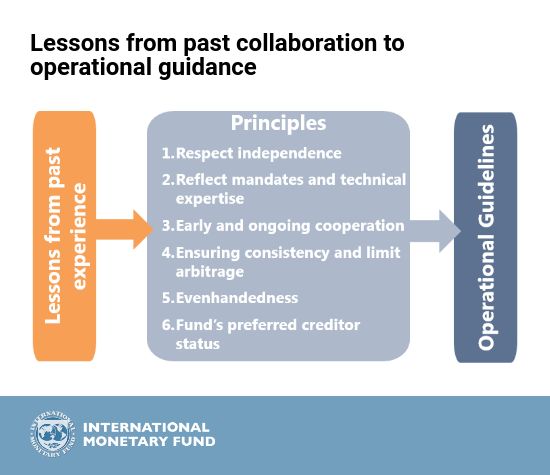December 21, 2017
Version in 中文 (Chinese), 日本語 (Japanese)
[caption id="attachment_22228" align="alignnone" width="1024"] Festival of lights in Chiang Mai, Thailand: Regional financing arrangements, such as the Chiang Mai Initiative, are playing a growing role in crisis prevention (photo: Tejas Tamobhid PATNAIK/newzulu/Newscom)[/caption]
Festival of lights in Chiang Mai, Thailand: Regional financing arrangements, such as the Chiang Mai Initiative, are playing a growing role in crisis prevention (photo: Tejas Tamobhid PATNAIK/newzulu/Newscom)[/caption]
A decade ago, regional financing arrangements played a limited role in the global financial safety net. However, the global financial crisis has drastically changed the landscape. Governments have created new arrangements—such as the European Stability Mechanism and the Chiang Mai Initiative Multilateralization—and the resources in the global financial safety net tripled between 2007 and 2016. Because of this evolution, and since the time to repair the roof is when the sun is shining, effective and efficient collaboration between the IMF and regional arrangements has become critical to preventing and mitigating crises in many parts of the world.
In light of these developments, and given its universal membership and role at the center of the global financial safety net, the IMF has recently proposed a framework to facilitate systematic collaboration with regional financial arrangements across various regions. The rationale for such a framework is clear—the global financial safety net is increasingly spread across many independent elements, and without strong collaboration, countries will be hampered in their efforts to mitigate and prevent crises.
Countries need coordinated action
Speed and adequate financing are critical to any country’s response to a crisis. A “too little, too late” response to crises only makes a country’s financial needs larger, and raises the prospect that the crisis and its impact can spread to other countries.
The IMF’s experience in helping countries in crisis and its universal risk pooling— combined with the greater regional knowledge and country ownership brought by the regional arrangements—can strengthen substantially the safety net. This collaboration “dividend” arises when, reflecting these relative strengths, countries are willing to seek combined assistance from the IMF and regional arrangements at an early stage, thus reducing the risk of contagion and containing crises.
Continuing dialogue
Recent initiatives have moved the IMF and regional financing arrangements closer together. For instance, the IMF was invited to participate in the 2016 “test-run” of the Chiang Mai Initiative Multilateralization. The two organizations simulated the crisis response in a scenario in which a member country experienced a shock that was sufficiently large to require financing from both the IMF and the Chiang Mai initiative Multilateralization. The test run was conducted to gauge the effectiveness and operational readiness of the latter in the event of a joint financing operation.
Nonetheless, to date, most collaboration has been ad hoc, particularly in crisis lending situations. Noting the importance of more systematic collaboration, the IMF’s Executive Board, the Group of Twenty advanced and emerging economies, and the IMF’s Independent Evaluation Office have all called for moving beyond a “case-by-case” approach by developing operational guidance.
The IMF’s new framework considers how collaboration can strengthen crisis prevention—by helping countries develop the capacity to formulate better policy and identify vulnerabilities early. But its focus is on co-financing in crisis situations.
The framework builds on lessons from the extensive joint lending in Europe in recent years. These lessons include fostering complementarity, coherent program design, the recognition of differences across lending partners, and the importance of early and ongoing cooperation.
From these lessons, we have derived several principles and operational guidelines. We recognize that how these principles are applied would depend on the context in which the financing takes place, as well as the characteristics and capacities of each participating regional arrangement, and its respective synergies and complementarities with the IMF.
In the case of co-lending, the nature of collaboration and the operational guidelines would, for instance, depend critically on the ability of the regional arrangement to design or monitor a program. Where such expertise exists, operational guidelines should allow for flexible collaboration.
In other cases, where a clear delineation of responsibility is possible, a lead agency model would be most appropriate—for example, in this model the IMF would take the lead on the macroeconomic framework and policies, while the regional arrangement would focus on areas within its comparative advantage. Finally, in the cases of more routine and day-to-day operations, such as country surveillance and capacity development, formal agreements can help streamline collaboration.
To take this work forward, we will need to maintain an open dialogue with regional arrangements, both collectively and individually. This will help us identify and resolve the obstacles to collaboration, especially in emergency situations, before the next crisis hits.
To support these efforts, a key task is to test in a practical, operational sense, how we can work together in a more structured manner, including through greater transparency and timely information sharing. The IMF’s participation in the 2016 test-run with the Chiang Mai initiative Multilateralization identified challenges to smooth co-lending that need to be addressed. Similar exercises in other regions could likewise be helpful.



